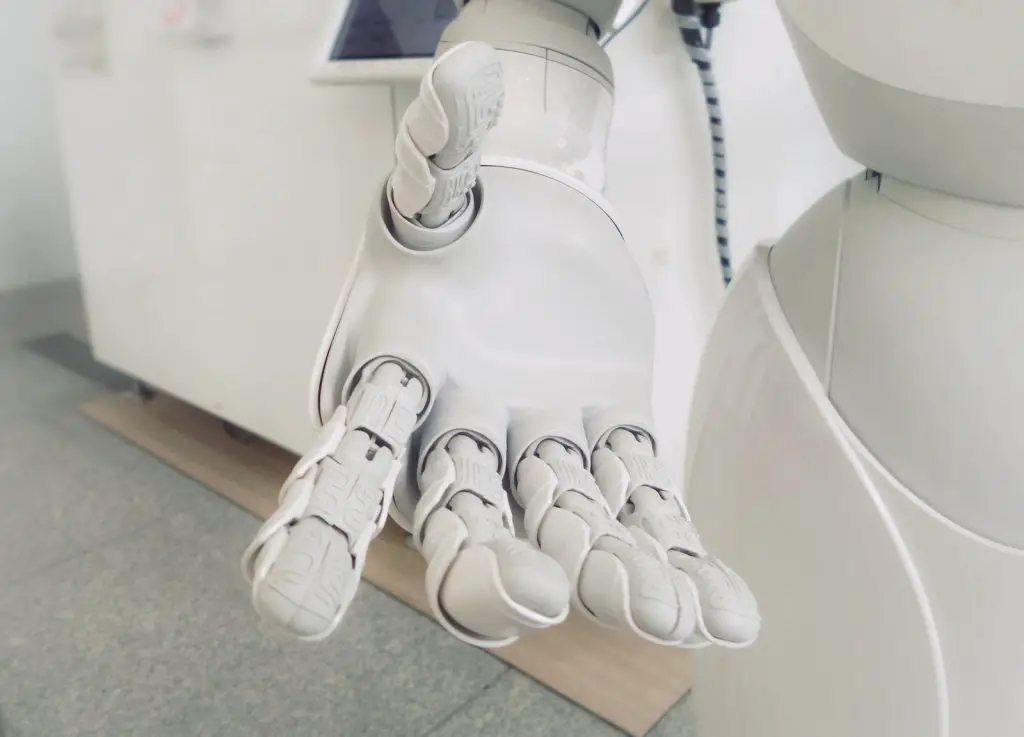This post may contain affiliate links which means I may receive a commission. Learn more on my Privacy Policy page.
The Rise of Robotics in Healthcare
Medical robots provide an efficient and cost-effective solution for human healthcare providers to provide better patient care. Medical robots are used for conducting routine lab tests, clearing plaque out of arteries and performing tissue biopsies – these tasks cannot be accomplished manually by human caregivers alone.
Other robots help clean wards, organize medicines and disinfect hospital rooms. Telepresence robots allow physicians to conduct remote ward rounds and surgical mentoring remotely.
Benefits
Medical robots have quickly become an invaluable asset to healthcare teams across a range of functions. From cleaning and disinfecting, medication identification and patient monitoring – medical robots allow doctors and nurses to focus on providing excellent patient care without interruption from mundane administrative duties.
Surgical robots have become widely utilized tools in surgery, enabling surgeons to perform less invasive procedures with greater precision and control. The da Vinci system alone has been utilized in over 6 million procedures worldwide.
Recently, robotic systems have been created that can assist professionals even before patients check in. One such robot developed by a startup in Mexico is Roomie; an autonomous, mobile device which triages patients by collecting their temperature, blood oxygen levels and medical history from any location where it is deployed.
These robotic systems can be particularly beneficial in preventing hospital-acquired infections caused by not being able to clean a room to 100% sterility between patients. Furthermore, their applications in clinical training could include simulating real-world scenarios and providing feedback that is more realistic for healthcare trainees.
READ MORE: The Best Android Smartwatch for Health Monitoring
Costs
Robots in healthcare have emerged at an exciting moment when demand for medical services is on the rise, costs are skyrocketing and specialist workers are scarce. Robots offer potential to reduce workloads, improve patient outcomes and make more efficient use of hospital resources, though their deployment poses its own set of unique challenges – healthcare providers must not only develop and maintain robots themselves but also be capable of gathering and analyzing the substantial amounts of data generated from them on an ongoing basis in an accurate and secure manner.
Robots are increasingly being employed in healthcare environments. Supply-delivery robots reduce travel times for staff while cleaning and disinfection robots reduce exposure to pathogens that increase hospital-acquired infections (HAIs). Social robots such as Jibo and Pepper help brighten patients’ lives too!
Surgical robots are among the most prevalent healthcare robots and offer surgeons a more precise view of the operation, making operations safer and more effective. But there are numerous other healthcare robots being developed and deployed such as receptionist, nursing, ambulance, rehabilitation and physiotherapy robots which may prove invaluable tools in supporting healthcare services delivery.
Applications
Robots can be utilized in healthcare to fulfill various roles. Among the ten most frequent roles are surgical, rehabilitation and mobility, radiotherapy, socially assistive devices, telepresence services, pharmacy dispensing robots (pharmacy role), disinfection services (disinfection role) transport delivery services and disinfection. Sub-roles within each of these roles such as strengthening robots under rehabilitation/mobility or drug compounding/dispensing robots within pharmacy are further elaborated upon within each role – for instance drug compounding/dispensing robots fall within radiotherapy roles or drug compounding or dispensing robots that comprise pharmacy roles respectively.
Surgical robots are robotic arms connected to cameras or surgical instruments operated by surgeons, which allow surgeons to reduce errors and make surgeries less invasive for patients. Furthermore, robot-assisted procedures include biopsy insertions, prostate cancer surgery and total hip arthroplasty procedures – among others.
As healthcare workforce shortages intensify, more hospitals are turning to robots as a source of assistance. Some robots perform repetitive and monotonous tasks such as blood draws and IV line installation – freeing nurses up for more important duties such as assessing and caring for patients. Furthermore, robots may even help triage patients prior to hospital visits by taking temperatures or identifying symptoms before providing guidance through virtual interaction or physical feedback such as vibration or haptic input.
Future
Healthcare robots can help nurses and doctors free up more time for patient care by handling repetitive manual tasks more easily, and provide a safer working environment. Robots are capable of cleaning rooms independently while their programming can limit person-to-person contact in infectious disease wards – they even come equipped with AI that detects, matches and distributes medicines across hospitals!
Hospitals are employing robots to assist in patient triage. A Mexican start-up company called Roomie developed a robot which scans bodies for signs of illness while recording medical histories – this allows the robot to then determine the most appropriate course of treatment and decrease risks such as infections or unnecessary surgery.
Robots also play an essential role in clinical training. Acting as physical surrogates for nursing students participating in simulations, robots allow instructors to provide realistic teaching environments rather than creating artificial simulations in laboratories.
Medical robotics have seen increasing adoption within healthcare, yet have yet to realize their full potential. Due to an aging population, diminishing health workforces and rising chronic disease prevalence rates, demand for robotic healthcare systems is rapidly increasing.




